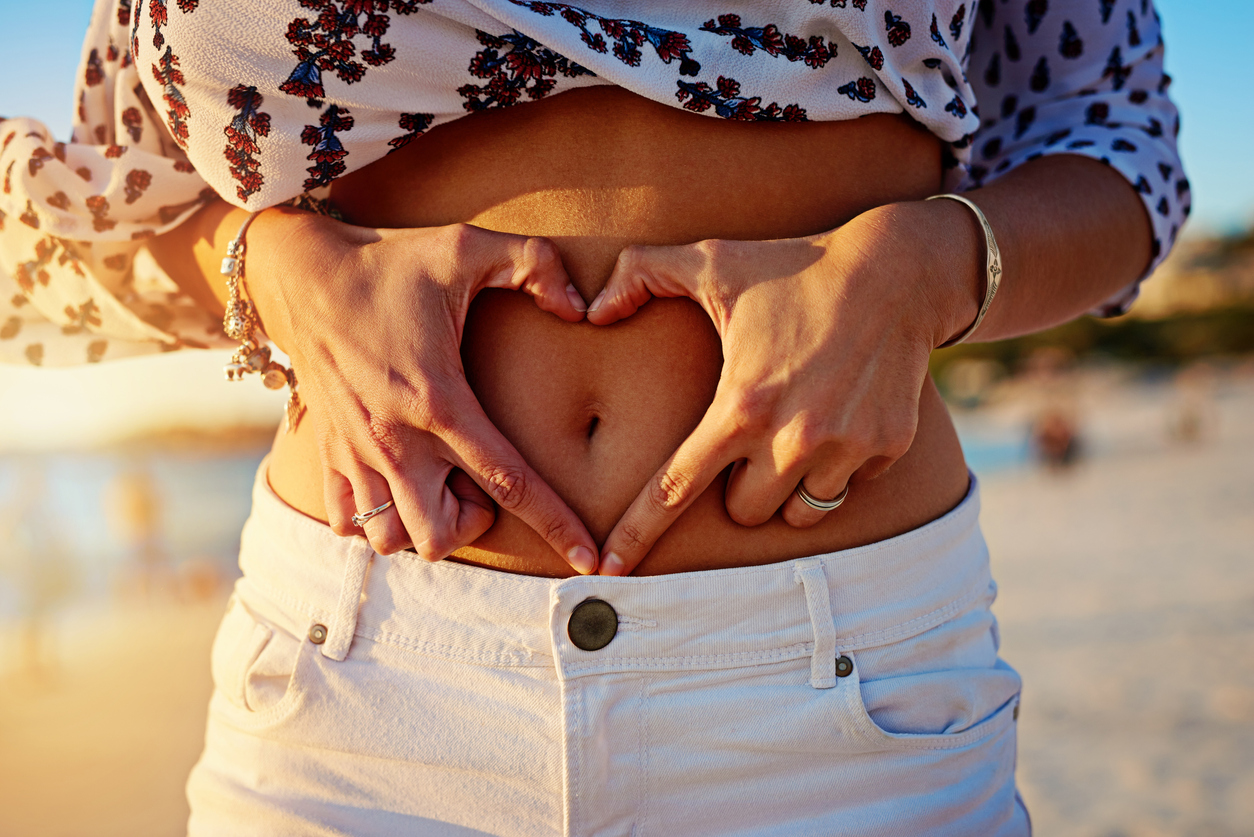Authored by Dr. Sarika Arora, MD
It is not uncommon for a woman to have miserable symptoms that go on for years before she finally finds some real answers. From diarrhea, bloating and gas to intense sugar cravings and weight gain, symptoms can send you from doctor to doctor, and may even lead to an IBS diagnosis and medication. But even then, you may still not uncover the root cause of your symptoms.

The unfortunate truth is that many well-trained conventional practitioners have not been taught how to recognize yeast overgrowths in the gut. But a thorough workup and stool analysis can usually confirm the identity of many of the culprits: parasites, systemic yeast infection and imbalanced gut flora. Then you’ll finally know why you feel the way you do. Once you’ve tracked down the real source of your symptoms, you can get back to eating a wide variety of foods with few symptoms, if any.
Let’s take a closer look at how Candida yeast overgrowth can disrupt your digestion, and how you can rebalance your gut terrain to keep yeast in check.
Common symptoms associated with systemic yeast
While many of these symptoms can be caused by conditions other than candidiasis, a woman suffering from a yeast syndrome will often experience body-wide symptoms in association with this condition. Because of the widespread nature of these symptoms, candidiasis is often referred to as systemic yeast.
Generalized: Fatigue, lethargy, food cravings, weight gain, migraine headaches, weakness, dizziness, sensory disturbances, hypoglycemia, muscle pain, respiratory problems, chemical sensitivities.
Gastrointestinal: Oral thrush, diarrhea, constipation, rectal itching, irritable bowel syndrome (IBS), inflammatory bowel disease (IBD), flatulence, food sensitivities.
Genitourinary: Yeast vaginitis, menstrual irregularities, PMS, bladder inflammation, chronic urinary tract infections (UTIs), cystitis.
Dermatological: Eczema, acne, hives. People with yeast overgrowth can also be prone to fungal nail infections, as well as skin infections such as athelete’s foot, Tinea rash, ringworm, “jock itch” and dandruff.
Psychological and emotional: Confusion, irritability, memory loss, inability to concentrate, depression, insomnia, learning disability, short attention span.
What is a systemic yeast infection (candidiasis)?
Women often equate yeast infections with vaginal yeast, rarely connecting yeast with what’s going on in their gut. Candida albicans is a fungal organism that is present in virtually everyone’s intestinal tract in small amounts. In a healthy gut, it is kept under control by normal immune system activity and beneficial microbes such as intestinal lactobacilli, bifidobacteria and others, including competitive yeasts. An intestinal environment that supports optimal balance between these myriad populations can easily be upset by such factors as:
- A diet high in refined carbohydrates and unhealthy fats
- Inadequate dietary fiber
- Impaired immune function (typically due to stress or illness)
- Use of medication such as antibiotics, steroids, birth control or other hormonal therapy
- Environmental or food sensitivities
Like any opportunist, Candida albicans will take advantage when conditions permit. Once that balance is upset, this organism is more likely to change form and proliferate, invading and colonizing our body tissues. Although it may first come to our attention in the form of a vaginal yeast infection or as oral thrush, Candida albicans can spread and become a serious problem — causing diverse symptoms not just in the reproductive or digestive systems but in multiple other systems in the body (see box).
Yeast sensitivity, sugar cravings and your digestion
When Candida yeast proliferates, it changes form, morphing from a simple, relatively harmless one into one that is capable of penetrating the intestinal lining. This elicits low-grade inflammation in the gut and causes breakdown of the boundary between the intestinal tract and the circulatory system. Known as leaky gut, increased intestinal permeability allows incompletely digested food particles and yeast cells to pass through and enter the blood stream. The immune system soon identifies these large particles as foreign, and ramps itself up to deal with them.
In part, food sensitivities and allergies are thought to develop as a result of this process — the invaders that make it across the gut into the blood get labeled as dangerous, and the immune system remembers them the next time it encounters them and reacts accordingly. People with candidiasis may need to avoid foods containing other yeasts and fungi in their diets because of this cross-sensitivity — the molecular subcomponents they contain are similar or identical to those found in Candida yeast, so the immune system cannot distinguish between them and responds accordingly.
Uncomfortable digestive symptoms like bloating, gas and bubbling in the gut arise because an overgrowth of yeast leads to the fermentation of foods instead of the digestion of foods. Along with these unpleasant symptoms, yeasts ferment sugars into alcohol, which destabilizes blood sugar and leads to intense cravings for more sugar. These tiny organisms can get us to do exactly what they want us to do — eat more carbs and sugar!
Many women with yeast issues fear that they will never again be able to eat sweets, carbohydrates or anything containing yeast, but such stringent measures are usually only needed for a time. Most find that once they remove the conditions that favor yeast overgrowth, they can once again enjoy these foods without going overboard.
Minimize Candida yeast — an at-home approach
It’s empowering to know that yeast is only thriving in your gut because of the current environment and that when you change the environment, you can make a yeast infection go away. To change the environment in your gut, we encourage you to use a combination approach, including dietary changes, supplements and lifestyle changes that provide a natural remedy for candidiasis.
When beginning dietary and other changes to reduce yeast, you may notice that your symptoms suddenly worsen. This toxic feeling, which generally lasts about 7–10 days, may be caused by the Herxheimer or “die-off” reaction. Symptoms may also return if you eat something unknowingly that rejuvenates yeast. If you feel symptoms of bloating, gas or stomach upset for whatever reason, you can lessen your discomfort by taking activated charcoal tablets with the onset of symptoms. Be sure to drink ample amounts of water and, as your digestive system allows, include plenty of dietary fiber.
You may want to add a natural soluble fiber supplement to your daily regime, such as a psyllium husk powder. Simply stir a tablespoon or so into a glass of soy, nut or cow’s milk, or blend it into a smoothie. (We recommend avoiding Metamucil as it contains artificial ingredients and is far more costly than natural psyllium husks.) This amount of fiber can be difficult for some who are just beginning to heal their digestive distress, but is something to work up to as you feel better.
Here’s what we recommend to minimize systemic yeast:
Natural antifungals
Should your symptoms of candidiasis persist after changing your diet and adding a multivitamin, omega-3s and probiotics, you may want to consider more intensive antifungal support.
Talk to a qualified naturopath or functional medicine practitioner about trying the following natural antifungals to help limit yeast overgrowth:
- Follow a healthy yeast-free diet. Maintain a diet high in whole foods, particularly with plenty of colorful, fiber-rich vegetables, regular moderate amounts of protein, moderate healthy fats and virtually no simple sugars. Ideally the diet needs to be free of artificial coloring, flavoring or fillers, as well as sweeteners. Those with Candida need to go on a yeast-free diet until they complete the initial healing phase.
- Replenish essential nutrients. Many women who have struggled with yeast over the long term also have nutritional deficiencies as a result of poor nutrient digestion and absorption. To help compensate for this, take a high-quality multivitamin/mineral complex daily. If you have Candida yeast, you will do best with one that is formulated to be highly bioavailable and easily digested, like our Essential Nutrients multivitamin. Also be sure you’re getting Vitamin C, Vitamin B12, Vitamin D and omega-3s.
- Add a probiotic. Repopulate your gut with friendly microbes that displace Candida and help to digest your food, rather than ferment it. For more details, see our article on probiotics, which includes guidelines on how to choose a good probiotic supplement.
- Explore natural and prescription antifungals. There are numerous natural antifungals found in the natural world (see box). When necessary, effective but strong prescription medications can also be called upon.
- Consider a stool analysis. Yeast syndrome is still poorly understood, and it can be misdiagnosed in both conventional and alternative circles. So please be sure to talk with your practitioner about all your options, and ask for a comprehensive digestive stool analysis first, to confirm the presence of yeast.
You are unique — and so is your relationship with Candida yeast
It’s important to remember that we are all unique and our symptoms, reactions and healing times are, too. This is particularly true with yeast issues. Some women notice wonderful changes by simply changing their diets, others succeed with a natural antifungal, and still others will require prescription medication. In a recent article on yeast, functional medicine practitioner Dr. Mark Hyman wrote:
In medical school, we are taught that you either have a disease or you don’t. It’s black and white. However, our bodies weren’t designed with an “on” or “off” switch for disease. All diseases occur in shades of gray along a continuum of imbalance…
This is such an important lesson for all of us. There’s a spectrum to all wellness and disease. Find the place where you feel best, and remember how you got there. You don’t have to completely eliminate yeast. You just have to contain it so that you feel well. With some time and deliberate modifications, you will be feeling better than ever!
References and further reading
DeMaria, A., et al. 1976. Gastrointestinal candidiasis in rats treated with antibiotics, cortisone, and azathioprine. Infect. Immun., 13 (6), 1761–1770. URL: https://www.ncbi.nlm.nih.gov/pmc/articles/PMC420829/?tool=pubmed (accessed 08.12.2010).
Hatakka, K., et al. 2007. Probiotics reduce the prevalence of oral candida in the elderly — a randomized controlled trial. J. Dent. Res., 86 (2), 125–130. URL (abstract): https://www.ncbi.nlm.nih.gov/pubmed/17251510 (accessed 08.12.2010).
Lukaczer, D. 2005. The “4R” program. In Textbook of Functional Medicine, ed. D. Jones & S. Quinn, 465. Gig Harbor, WA: Institute for Functional Medicine.
Brandtzaeg, P. 2007. Why we develop food allergies. Am. Sci. URL: https://erweb2.eresources.com/issues/id.1012,y.0,no.,content.true,page.1,css.print/issue/ (accessed 09.09.2009).
James, M. 2005. The gut–liver axis. In Textbook of Functional Medicine, ed. D. Jones & S. Quinn, 568. Gig Harbor, WA: Institute for Functional Medicine.
Myhill, S. 2010. Yeast problems & candida — an imbalance implicated in many health problems. URL: https://www.prohealth.com/library/showarticle.cfm?libid=15507 (accessed 08.11.2010).
Myhill, S. 2010.
Hyman, M. 2010. Is hidden fungus making you ill? URL: https://www.huffingtonpost.com/dr-mark-hyman/yeast-infection-symptoms_b_657354.html (accessed 08.11.2010).
Hyman, M. 2010.










